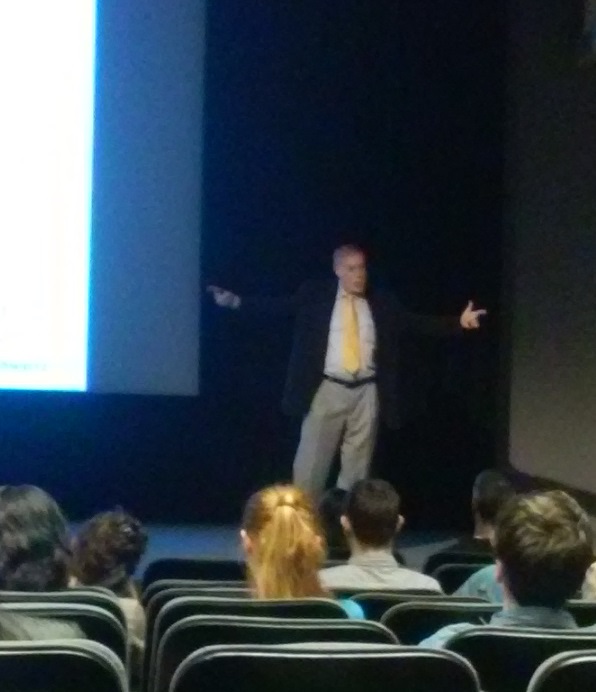By Alex Highley, GOPC Project Associate Last week, Greater Ohio Policy Center attended a lecture given by Sam Schwartz at the Ohio State University. Schwartz is one of the world’s most famous traffic engineers and has recently published a book called Street Smart: The Rise of Cities and Fall of Cars. Known as the “Jane Jacobs of Traffic” and in Canada as the “Wayne Gretzky of Traffic Planning,” Schwartz works with communities to develop more walkable, people-friendly environments that reduce people’s reliance on cars. Like, Schwartz, GOPC advocates for policies that strengthen Ohio’s public transportation systems as well as multimodal systems, which include biking and walking, in order to strengthen neighborhoods and cities.
Schwartz showed projection graphs from a few decades ago that predicted driving would increase over time. Data show that miles travelled on the road actually began to decline ten years ago. Interestingly, this wane actually began in 2004, thus ruling out the theory that it might have been the Great Recession that caused this decline and instead suggesting that people have become less interested in driving. Even though drivers have travelled fewer miles since 2004, federal budgets for highways and bridges have still risen because they were based on the original projections that driving would increase as well. Thus, an increasing amount of tax revenue has been spent on expanding roads and highways across the country, which Schwartz believes has done very little to improve transportation problems that persist today.
For example, study after study concludes that highway expansion does not actually reduce congestion on the road in the long term. GOPC emphasizes this in much of its policy work and supports methods of highway system preservation rather than expansion, which is especially appropriate in a state that is not substantially adding new population. Schwartz indicates that the concept of induced demand comes into play when roads are widened, whereby people are then more likely to use the road when they know it has been expanded, thus perpetuating the problem that there are an excessive number of vehicles on the road. Instead, in environments where people can choose to bike, walk, or take transit, space opens up and congestion is ameliorated.
Culturally, it seems to Schwartz that young people today are looking to branch out to using multimodal options. He believes that part of this stems from people spending so much time as kids in the backseat of a car going from school, home, and soccer practice. Whereas freedom a few decades ago was seen as owning and using a car, these days he believes it means having a phone app where you have access to many different types of transportation, such as Uber and Lyft, or information on when and where the next bus will arrive. Moreover, much of Schwartz’s work emphasizes the health dangers posed to people who are not active. By building people-friendly environments where people can move around, communities will help reduce the risk factors for many non-communicable diseases caused from inactivity.
Interestingly, Schwartz believes that transit will only be properly funded once the well-to-do start to use it in that particular state or city. Once a community shows that users along the spectrum of socio-economic statuses are using the service, then the mode will likely receive more attention and will generate more resources.
Schwartz’s talk reinforced GOPC’s vision for Ohio—a modernized, well-funded transportation system that adequately supports transit rider, bicyclists, walkers, and drivers.


